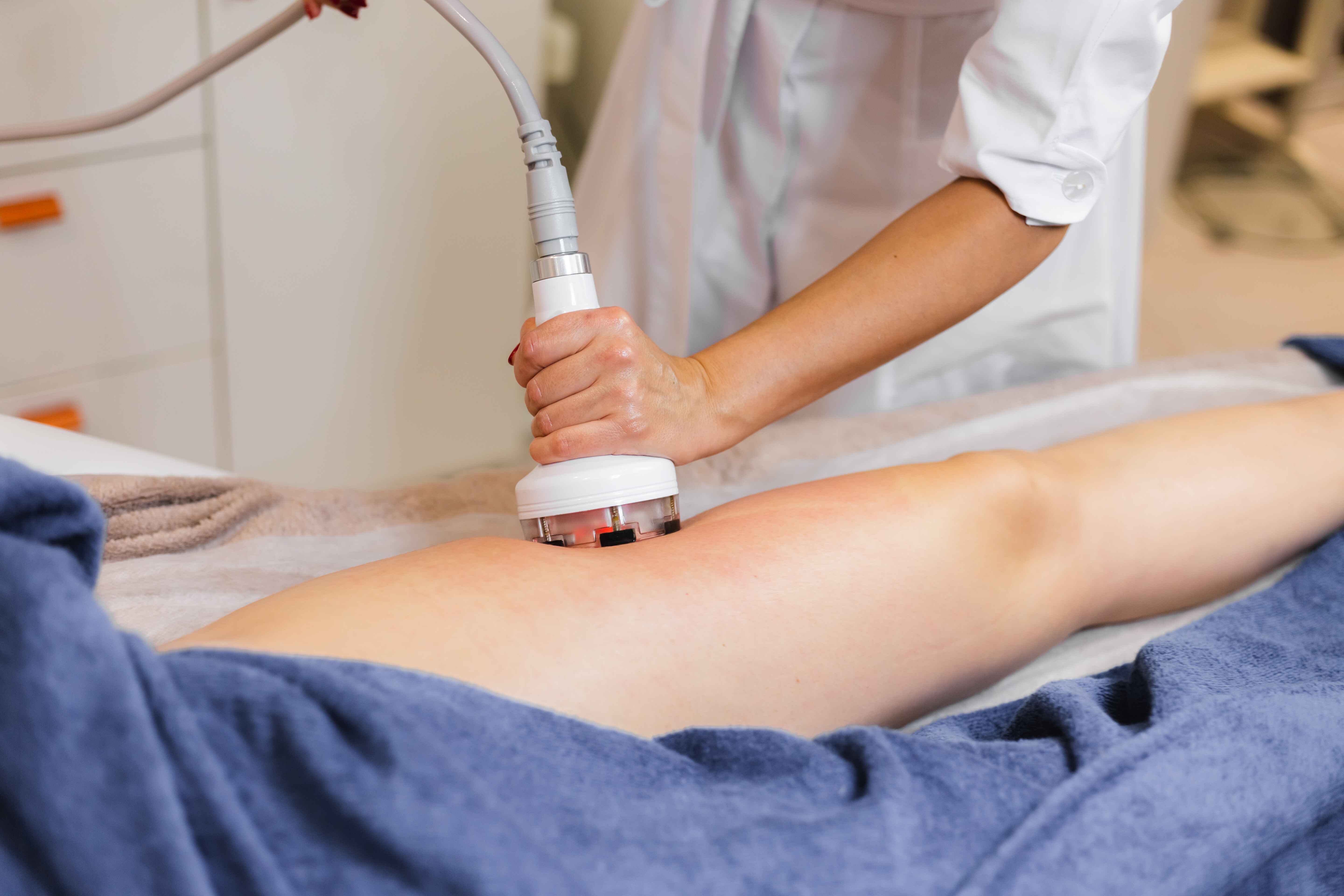Welcome to a Advance Physiotherapy Center

What is Ultrasound therapy (US therapy)?
Therapeutic ultrasound is a modality that has been used by physiotherapists since the 1940s. Ultrasound is applied using the head of an ultrasound probe that is placed in direct contact with the skin via a transmission medium i.e. coupling gel.
Ultrasound (US) is a form of mechanical energy (mechanical vibration). Mechanical vibration at increasing frequencies is known as sound energy. Normal human sound range is from 16 Hz to something approaching 15-20,000 Hz (in children and young adults). Beyond this upper limit, the mechanical vibration is known as ultrasound. The ultrasound frequencies used in therapy are typically between 1.0 and 3.0 MHz (1 MHz = 1 million cycles per second).
Indication of ultrasound / when to use ultrasound ?
• Relief of pain
• Muscle spasms
• Joint contractures
• Soft tissue injuries
• Scar tissue healing
• Chronic indurated oedema
Some common Conditions treated by ultrasound:-
chronic and sub chronic conditions of bursitis/capsulitis, (Eg. Frozen shoulder)
Epicondylitis, (Eg. Tennis Elbow)
Ligament sprains, (Eg. Anterior Talofibular Ligament [ATFL]
Tendinitis, (Eg. Supraspinatus, Achilles tendonitis)
Scar tissue healing (Eg. Post Operative Scar)
Muscle strain (Eg. Hamtrings)
Ulcers (Eg. Varicose ulcers)
How many Types of Ultrasound Therapy?
1. Thermal ultrasound therapy uses continuous transmission of sound waves. The sound waves cause microscopic vibrations in the deep tissue molecules, increasing heat and friction. The warming effect encourages healing in the soft tissues by increasing the metabolism at the level of tissue cells.
2. Mechanical ultrasound therapy uses pulses of sound waves to penetrate tissues. While this still has a minor warming effect on the tissues, it also causes expansion and contraction in the tiny gas bubbles of the soft tissues. This helps to decrease the inflammatory response, reducing tissue swelling ultimately leading to reduction of pain.
How Is Ultrasound Therapy (US therapy) Perform?
Physiotherapist will select your indicated condition According choose a small surface area to work on for five to ten minutes. A sonography/ECG gel is applied either to the transducer head or to your skin, which helps the ultrasound sound(US) waves evenly penetrate the body tissue. During your ultrasound therapy treatment, your therapist will continually move the transducer head over and around the selected area.
Will I Feel Anything during Ultrasound Therapy (US therapy)?
Some people may feel a mild pulsing during ultrasound therapy, while others may feel a slight warmth on application site. Don’t be surprised, however, if you feel nothing at all, apart from the cold sonography gel on your skin. If the area being treated is especially sensitive to touch, you could possibly feel discomfort as the transducer head passes over. Ultrasound therapy, however, should not be painful.
Is Ultrasound Therapy (US therapy) Safe?
Ultrasound therapy is deemed safe by the FDA provided it is performed by a licensed person and provided the Physiotherapist keeps the transducer head moving at all times.
How Does an Ultrasound Work?
The ultrasound waves are generated by a piezoelectric, Acoustic streaming, Micro-Massage effect caused by the vibration of crystals within the head of the probe. The ultrasound waves that pass through the skin and gel cause a vibration of the local soft tissues. This vibration or cavitation can cause a deep heating locally though usually no sensation or minimal warm sensation of heat will be felt by the patient.
What is an Ultrasound Dose?
A typical ultrasound treatment will take from 5 - 7 minutes, which depends on condition or problem of patient and choice of frequency of ultrasound by Physical therapist.
The table gives some indication of typical (or average) half value depths for therapeutic ultrasound.
| 1MHz | 3MHz | |
|---|---|---|
| Muscles | 9.0mm | 3.0mm |
| Fat | 50.0mm | 16.5mm |
| Tendon | 6.2mm | 2.0mm |
| Depth(cm) | 3MHz | 1MHz |
|---|---|---|
| 2 | 50% | |
| 4 | 25% | 50% |
| 8 | 25% |